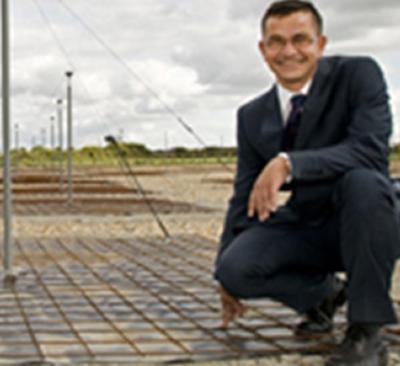Southampton professor leads global project to track astrophysical events as they happen

A University of Southampton professor is leading a global project which will, for the first time, be capable of tracking astrophysical events across the sky as they happen.
Using next-generation radio telescopes in Europe, South Africa and Western Australia, the 4 Pi Sky project will look for energetic black holes, colliding neutron stars, and astrophysical explosions all the way back to the first stars.
Professor Rob Fender who leads the five-year programme, says: “The universe is a violent and dynamic environment in which explosions of massive stars can outshine an entire galaxy and black holes swallow whole stars.
“These high-energy bursts emit radio waves, which can be detected at vast distances. However, previous telescopes could only see a tiny fraction of the sky and missed 99 per cent of these important events. The new telescopes can monitor the whole sky and will find thousands of such events. These observations can shed light on phenomena at extremes of physics unachievable in laboratories on earth, and can act as cosmic searchlights, illuminating the 'dark ages' before galaxies were formed.
“This project might even help us identify the first sources of gravitational waves, and in turn test the most fundamental theories of gravity.”
Funded by the European Research Council, the 4 Pi Sky programme will use three radio telescopes – LOFAR (Low Frequency Array), which has sites across Europe, including at Chilbolton, Hampshire; MeerKAT in South Africa; and ASKAP in western Australia.
In a new departure for astronomy, scientists will be able to link from telescope to telescope to follow astrophysical phenomena as the Earth rotates, using new software that will be developed to provide a ‘detect and alert’ system for all three facilities.
The project will also collaborate with ground-based optical telescopes and with the orbiting MAXI X-ray telescope, which is located on the International Space Station.
“The multi-wavelength dimension will provide us with crucial information on the nature of the radio sources,” says Professor Fender.
“Working with LOFAR, MeerKAT and ASKAP, and the optical and X-ray telescopes, we will build a global network to monitor the whole sky. Every time such an advance has happened in the past, exciting new discoveries have been made – who knows what we might find this time.”